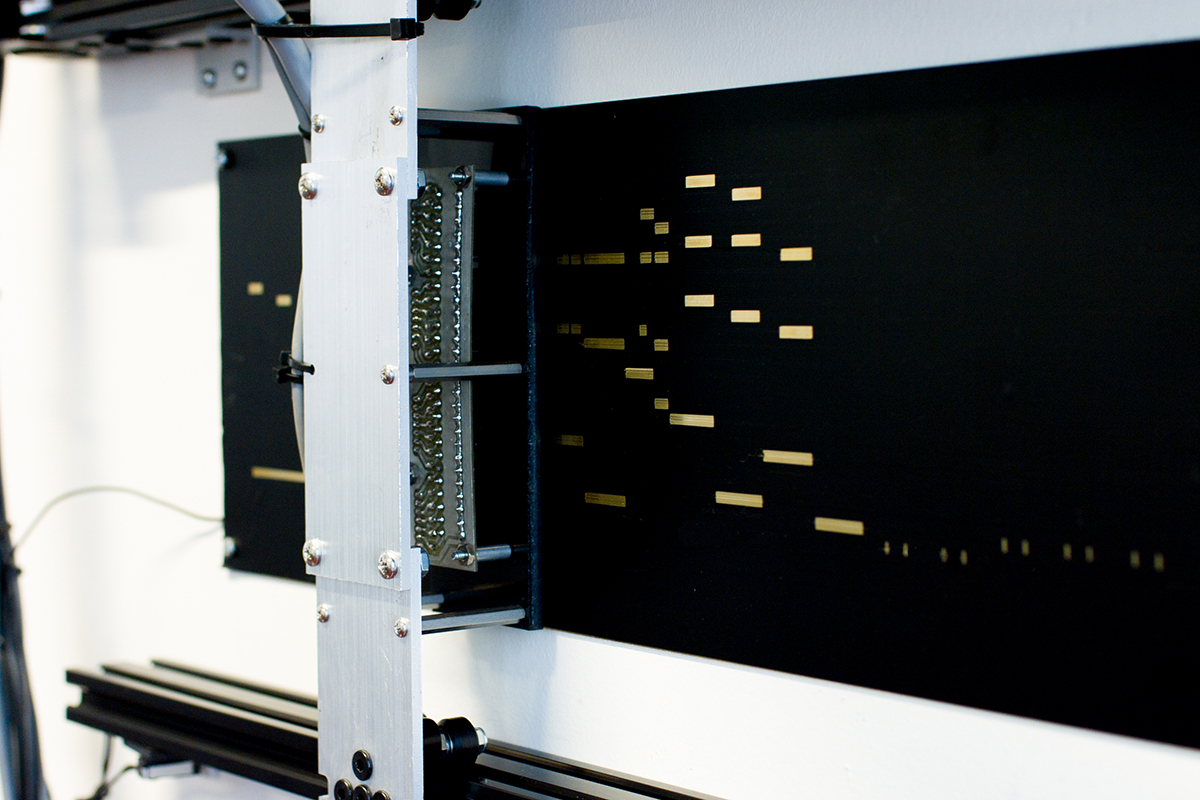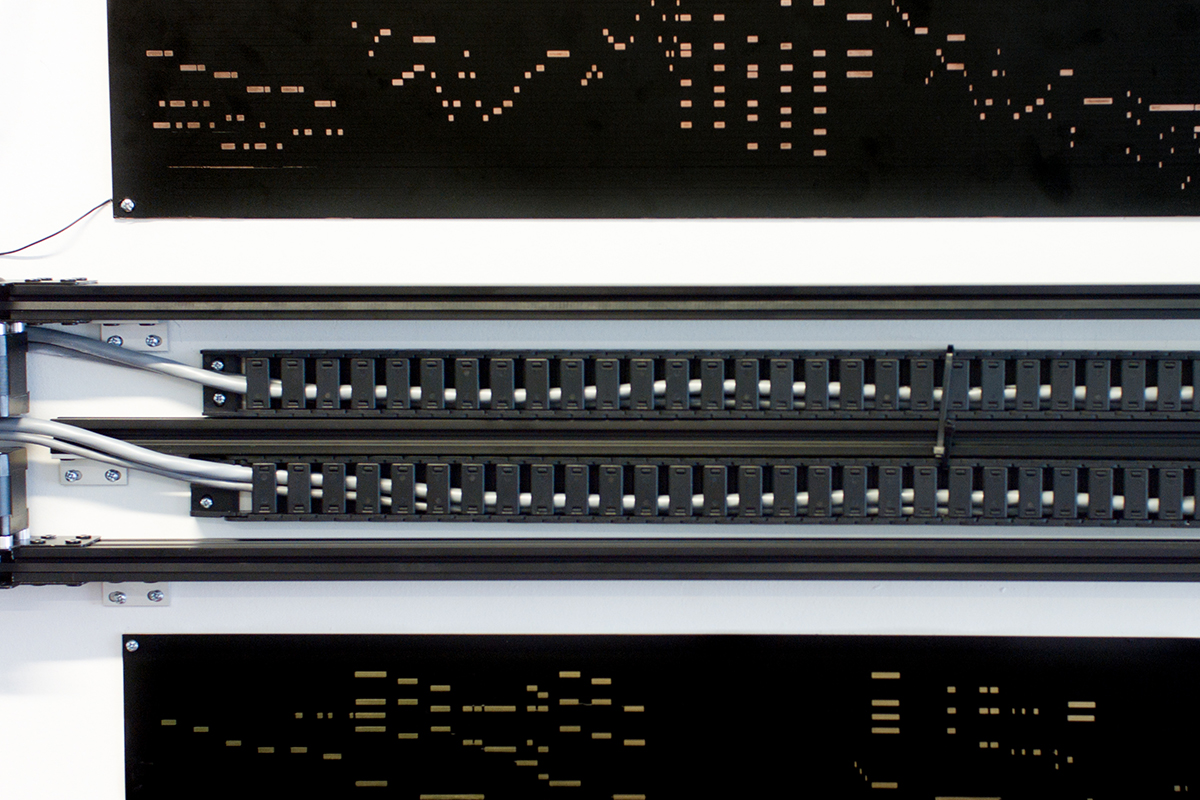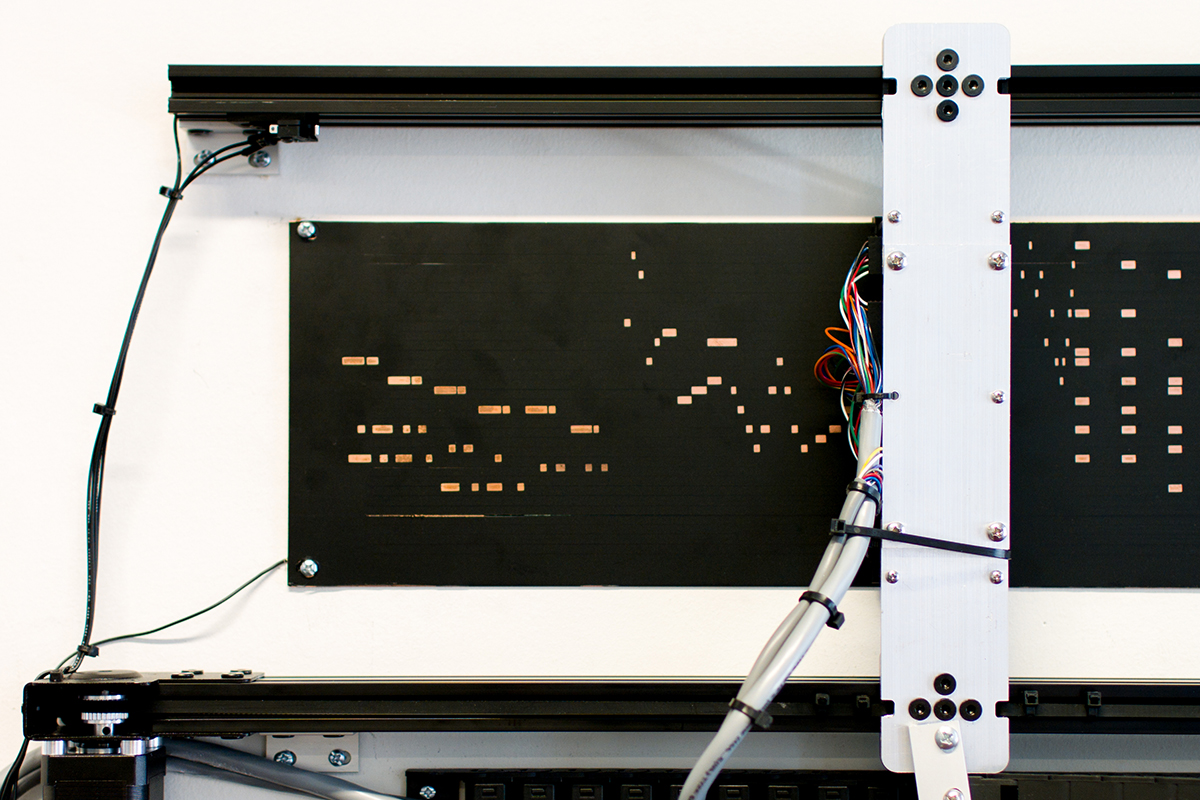Adeus
2016
New York, NY
The piece consists of two metal plates (one brass; one copper) containing musical notation represented by etched dashes. The song is “Valsa de Eurídice” (Eurydice’s Waltz) by Brazilian poet and musician Vinicius de Moraes.
The metal plates are“scanned” by an array of sensors that are attached to two linear actuators, one for each plate. When the system is triggered, both groups of sensors start moving along the plates in sync and play the song. Having reached the end of the plates, the sensors will move backwards and start again. However, since the system is assembled by a human, the array of sensors will slowly begin to move out of sync, altering the overall sound that is played – the assembly is not perfect, mirroring the flaws and entropy inherent to human nature.
︎
The metal plates are“scanned” by an array of sensors that are attached to two linear actuators, one for each plate. When the system is triggered, both groups of sensors start moving along the plates in sync and play the song. Having reached the end of the plates, the sensors will move backwards and start again. However, since the system is assembled by a human, the array of sensors will slowly begin to move out of sync, altering the overall sound that is played – the assembly is not perfect, mirroring the flaws and entropy inherent to human nature.
︎
The whole auditory mechanism will gradually fall into disorder, but due to the system’s idiosyncrasies, it will recover from that entropy and the sensors will eventually get in sync again, only to launch their descent into chaos. From the moment Orpheus begins his journey back into the mortal world, he is gradually declining into disorder that will culminate with the death of Eurydice. Before this fateful event occurs, however, a liminal space emerges – the moment that precedes his looking back – that Nicolas Bourriaud calls an “interstice.” This small gap in space and time allows for the creation of a domain of exchanges between Orpheus and Eurydice. To borrow from Ann Wroe “it is the moment that Orpheus loses beauty, even as he glimpses it, because it is ungraspable”.
︎︎︎

︎


